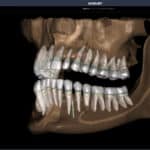Orthodontic practices that implement and maintain strong operational systems consistently achieve higher performance, better teamwork, and improved patient satisfaction.
By Roger P. Levin, DDS
We have a saying at Levin Group. “Your success will be directly proportional to the quality of your practice systems.” Over the last 40 years we have continually observed that the best orthodontic practices have the best systems. For a while, it was possible to have excellent results in a chaotic environment simply based on a high volume of patients, but this leads to all kinds of additional problems and it’s hard to sustain. In our 30-year ongoing study of top 10% orthodontic practices, those that enter and remain in the top 10% consistently have the best systems.
Why Are Systems Essential for Orthodontic Success?
Every great company knows that much of what happens in operations is repeatable. Repeatability means that it can be placed into a system for everyone to learn and follow to produce the same quality results every time. The word quality to most orthodontists reflects clinical outcomes, but to customers quality also means excellent customer service, handling of insurance claims, convenience, etc. Quality is not simply limited to what happens in an ortho chair.
How Can Systems Prevent Team Complacency?
Another reason that systems are so important is that it is the only real way to train a team at the highest level. Perhaps if you have a team that has been with you for many years they know a great deal about the practice operations, but we can guarantee that the team is not spending time focused on how to increase practice production by 18% per year over the next 3 years. In fact, while longevity of a team is a key factor in orthodontic practice success, there is one downside, and that is the onset of complacency. Complacency often occurs as a natural outcome of a team that has worked together for a long time. Simply because everyone is happy, everyone likes each other, and everyone likes what they do, there is no desire to push for improvement. It is up to the doctor as a leader to continually motivate the team to move forward and implement new positive changes that continue to improve practice performance.
What Makes a System Effective in an Orthodontic Practice?
A system is not just a concept. It is a rigid, mathematically derived process designed to get the best results consistently. Even a system as subjective as customer service can still be designed to ensure the same experience for almost every patient every day.
Three Key Rules for Implementing Orthodontic Systems
- The system should be designed around the goal. Systems without goals and objectives are just workflows and often result in lower performance without understanding why.
- The system must be followed. We have seen practices that have invested huge sums of money and time creating systems, acquiring advice, and then making no difference for the practice. In most of these cases it wasn’t that the staff would not do it, but that the leadership did not measure it. The team needs to understand that the systems being put in place are essential for the future of the practice. It is what will allow the practice to pay salaries and bonuses. It’s what will allow the practice to perform at a higher and higher level and stay in business. Once the team understands why the systems are so important the chances of success improve dramatically.
- Follow a continual improvement cycle when it comes to systems. Putting in the time and effort to create new systems may not be how orthodontists want to spend their time. If you have an office manager, this is a key part of their job responsibility.
How to Train Your Orthodontic Team with Systems
Systems are the only way to properly train your team. Team members do not figure out on their own how to improve practice production, profit and income, nor is it their job. The orthodontic team has enough work every day to keep them more than busy simply doing their job as it is laid out. Setting strategies for the practice always has to be the job of the doctor and occasionally a high-level office manager. Once the strategy is established the best way to train the team is to give them step-by-step systems to follow. That is why systems work and that is how systems should be designed. OP
Photo: ID 219139400 © Nicoelnino | Dreamstime.com

Roger P. Levin, DDS, is the CEO and founder of Levin Group, a leading practice management consulting firm that has worked with over 30,000 practices to increase production. A recognized expert on orthodontic practice management and marketing, he has written 67 books and over 4,000 articles and regularly presents seminars in the U.S. and around the world. To contact Levin or to join the 40,000 dental professionals who receive his Practice Production Tip of the Day, visit levingroup.com or email [email protected].










